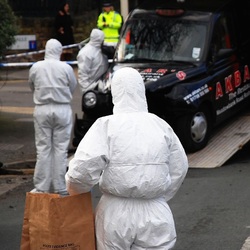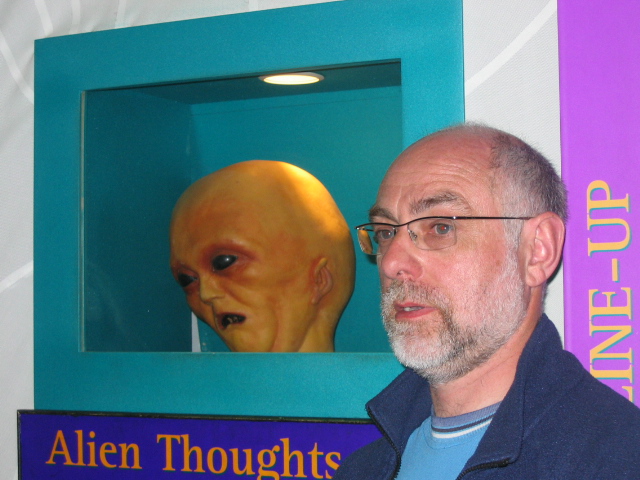
Until, that is, we got to a crucial plot point.
A murder has taken place in a very private part of the City. Time is tight, investigators are (for political reasons) only allowed a short time at the scene. The Head of the Forensic Science Department (or the equivalent in the Italian Police) is called in, and within an hour has completed his examination, found the crucial evidence, and left.
That, to me, was a major failing that nearly torpedoed the entire book. Because it just couldn’t happen that way.
Leave aside having a Head of Department carrying out the examination. No disrespect to any HoD’s, but it is not their job. They might have been pretty hot stuff at a crime scene once, but the best of them will admit that after a year or so behind a desk, they’re bound to get rusty. But perhaps it’s different in Italy. So I’ll pass over that, though with raised eyebrows.
The real problem here is that the forensic examination of a murder scene takes longer than an hour. A lot longer.
To give some idea of what’s involved, let’s think, first of all, of what a CSI might have to do at a basic burglary. On arrival at the scene, he or she first has to talk to someone (the victim or an attending police officer) and establish the facts. If it’s straightforward, and the person isn’t too garrulous, it might be possible to trim that down to ten minutes. Then the CSI does a visual exam of the scene, to confirm what might be suitable for closer inspection. Assuming that they’re pretty good, and it’s a small scene, that’s five minutes. Fingerprint powder on the Point Of Entry and, let’s say two items handled by the offender – fifteen minutes. Assume for this example that a footprint and a fingerprint are developed. Five minutes to draw a diagram, showing where they were found, with measurements. Ten minutes to recover each of them – assuming that they can be lifted off and don’t need photographing. Five minutes to get a copy of the victims fingerprints for elimination purposes, another five to tidy up and say goodbye.
That’s nearly an hour, just for a basic, no-frills, straightforward burglary. No DNA recovery, no general scene photography, no access routes to or from the scene. And we’ve not even considered writing up the scene report – still less the work that has to be done back at the office (booking in exhibits, updating databases, etc.)!
For a murder, you’re talking about a much more comprehensive and therefore much more time-consuming examination. For a start, everything in the scene is first photographed and videoed. And the scene would extend to all the possible exits, entrances, and routes between.
Then we get down to the details. Every footprint, partial footprint, trace of footprint, must be diagrammed, measured, photographed with scales. Every area of blood has to be assessed – is it spatter? Drops? Smears? - measured, diagrammed, and photographed. Blood samples have to be taken from all areas – and the exact position must be recorded, both in diagrams and photographs.
You’ve got several hours work there alone, and not just for one person either. Two CSI’s at a minimum, three more likely, and a Crime Scene Manager deciding strategy and directing operations. So far, you haven’t even begun on fingerprinting, or recovering items for lab work.
Most murder scenes will take several days to process properly. Quite apart from the work done by the CSI’s, outside experts will often be called in. A Pathologist, to look at the body in situ before it’s taken for a full post mortem. A Blood Pattern Analysis expert. A Ballistics expert if a gun was involved. If a gun has been left at the scene, that requires special treatment from a Firearms Officer. And so on.
The problem for the crime writer is that a full, accurate, blow-by-blow description of a scene examination would quickly become boring. You can’t say it as it is and expect to keep the reader’s attention. The writer’s skill comes in keeping it authentic whilst still keeping it moving!
Of course, even in the real world, there may be reasons why a scene examination has to be cut short. In an outside scene, for example, the weather may be a factor. So if your plot requires a curtailed examination you can work that in – but show that it is a less than ideal situation. Details will be missed, clues overlooked, evidence lost. Which is what happens when actual examinations are truncated.
Shortcuts are possible, but they carry risks and there has to be good reasons for them. For example, in one of my crime scene short stories, Ben Drummond (my main character) has to examine an apparent murder scene on his own. But that’s explained: it’s an outside scene, it’s getting dark, weather is deteriorating, no one else is available, etc. And because he’s really good at his job, he focus’s at once on the crucial bit of evidence and deals with that first. Just as should happen in a real life situation.
The writer should also remember that a minimalist examination is going to give rise to criticism further down the road. Senior officers will be reviewing the entire investigation. If it goes to court, defence lawyers will be looking very closely at how the examination was carried out. If a procedure wasn’t followed, a piece of evidence not properly recorded – then they can be expected to find out! Just one thing out of place might be enough to call the rest of the evidence into question and cause the case to fail.
So, Crime Writers – give your CSI’s time to do their job! Think days, not hours, think teams, not individuals, and think meticulous attention to detail. Because it’s that that gets the results in the real world.

 RSS Feed
RSS Feed
